Phase 4 — Mastering the Gentleman Spy Skill Set
Lesson 4 — Driving
LESSON 4: Driving
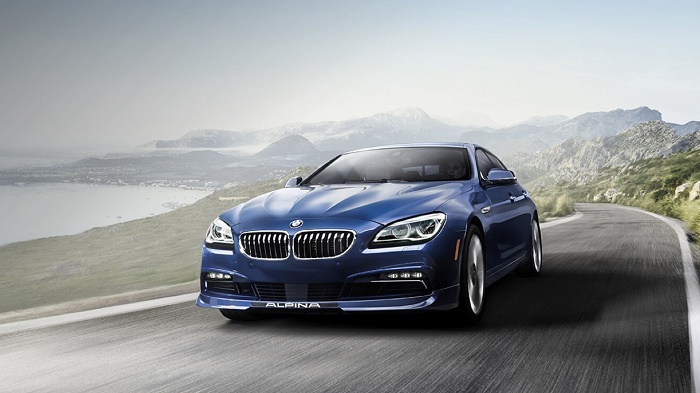
The average American has a half hour commute to and from work each way, and daily commute times of 2–4 hours per day are common around major metropolitan areas. Add in the time spent behind the wheel to go shopping, out to eat, taking the kids to school, soccer practice, etc. and you could easily be spending 1,000+ hours per year in your car.
For most people, that time is spent almost completely zoned out — just going with the flow of traffic, paying the barest minimum of attention; or worse, talking on the phone, texting, scrolling through Facebook, yelling at the kids in the back seat, etc.
You are driving a 2,500–7,500-pound missile,
On the road with thousands of other people driving 2,500–7,500-pound missiles,
Many or most of whom are barely competent, not paying attention, inebriated, stupid, aggressive, all of the above, or worse.
Despite all this time on the road, most people haven't done anything to improve their driving skills since they took a driver's education class in their teens, if they even did that. You can do better.
Vehicle Setup and Mindset
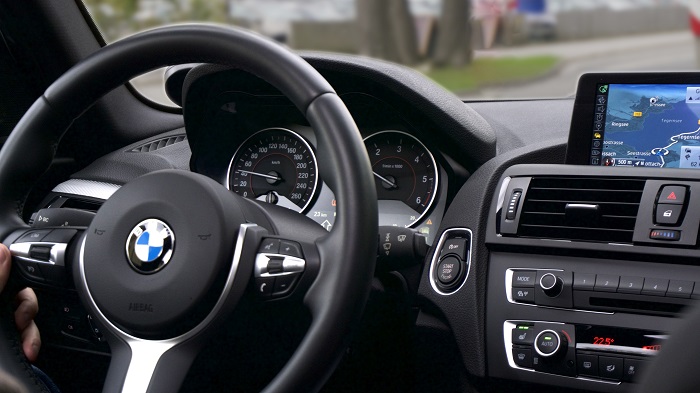
At the very minimum, you probably need to shift your mindset.
If you are not already an excellent driver — and unless you have attended multiple advanced driving schools, you are NOT an excellent driver, regardless of what your ego tells you — you need to make a mental shift.
Driving is something that you will do almost every day for the rest of your life, so you owe it to yourself and those you love to become the best driver you can.
Pay Attention to the Traffic Around You
This is the most important rule that most people — especially Americans — don't follow properly.
You should know what is going on in front of you, behind you, to your sides, and in your blind spots at all times.
- Don't just watch the car in front of you — you should be scanning as far ahead as you can see to know what traffic is doing and is going to do.
- You should always be scanning your left, right, and rear-view mirrors (*see below on how to properly adjust your mirrors).
Read the road and read the traffic.
Put Down the Phone
No phone calls. No text messaging. No e-mail. No checking Facebook or Twitter. Period.
The only reason you should be on your phone on the road is to have an app like Waze or Escort Live running to inform you of accidents, cops, speed traps, etc.
Using a hands-free device (headphones, speaker, etc.) is better than holding the phone, but still not ideal. Focus on driving, not talking, and definitely never texting or reading.
If the call or text is so important that you must take it, then it is important enough for you to pull over and focus on it exclusively.
NOTE: this applies equally to vehicle/phone integrations; just because Apple Car Play and Android Auto exist doesn't mean it's smart or safe to use them.
Turn Down the Radio
For daily driving, listening to the radio is fine, but do it responsibly; if your radio is so loud you can't hear the traffic, motorcycles, and emergency vehicles around you, then you are wrong.
If you're speeding, in a real hurry, have to interact with passengers, or have to pay attention to a new route, turn off the radio completely.
Look Where You Want to Go
In an automobile or motorcycle, one of the most important things to keep in mind is to look where you want to go. Where you look, your body (and vehicle) goes.
Don't look or focus too much on what's 10 feet in front of you or off to the side. Look at where you want to go, and your vehicle will go there.
Properly Adjust Your Seat and Vehicle Controls
Your seat should be adjusted so you have a full view of the road, and full control of your vehicle. Not too high, not too low, and far enough forward so that you can control the full movement of all the pedals without having to stretch or overextend your legs and feet
The seat back and steering wheel should be adjusted so that — with your shoulders all the way back and pushed against the seat — you can touch the top of the steering wheel with your wrists.
The steering wheel should be adjusted so that, with your hands at 9:00 and 3:00, you can turn the wheel a full 180° comfortably.
Common problem: the wheel is adjusted too low to facilitate driving with your knees. While convenient, it is dangerous because it limits your hand movement around the wheel.
Everything about your position in the car should allow you full control of the vehicle, without being cramped, and without having to stretch or fully extend your limbs to operate the basic controls.
Properly Adjust Your Mirrors
You have "blind spots" because your mirrors are adjusted incorrectly. Don't worry, this isn't your fault; it's a problem so common that blind spot information systems are becoming a standard feature on cars, despite not being necessary for the good driver.
You don't need to see the sides of your car. Your mirrors should be adjusted far enough out so that by the time a vehicle disappears from your center rear view mirror, it is visible in your side mirrors.
- Lean until your head is against the driver's side window. Adjust your mirror so you can just barely see the side of your vehicle.
- Lean the other direction until your head is over the center console. Adjust the passenger side mirror until you can just barely see the passenger side of your car.
- From your proper driving position, adjust the rear-view mirror so that it's centered and offers an optimal view of the road behind you.
Good articles explaining this in more depth are available via Car and Driver and ITS Tactical.
Go With the Flow
Going too fast — or too slow — is dangerous for everybody involved.
Speed limits often exist to generate revenue, not for safety. Work with the traffic, not the law.
The left lane is for passing only. If you're not passing everybody, move over and let others pass. If somebody faster is coming up behind you, move over and let them pass.
Don't screw with the flow of traffic because you think you're going fast enough, you're just keeping pace with the other lanes, or worse, you insist on following the speed limit, blocking other traffic in the process.
Smooth is Fast
Read the road and move smoothly with or around the traffic.
Don't floor it, slam on the brakes, or swerve in and out of traffic.
How many times have you seen a driver darting in and out of traffic, trying to get ahead, only for you to pass them as you move along with the flow of traffic? Don't be that guy; you only stress yourself out and create additional risk for everybody else on the road, yourself included.
Keep Your Distance
Tailgating isn't just inconsiderate, it's dangerous and stupid.
If you're moving, distance equals time to solve problems; time to stop with enough space not to rear-end anybody or get rear-ended yourself or change lanes to get around dangerous traffic.
If you're stopped, keep enough space to exit a bad situation; whether a stalled car in front of you, an accident, or a road-raging driver trying to provoke you into a fight or accident
Don't Fight With Other Drivers
Fighting on the road is a sure-fire way to end up in trouble:
- If you're in a hurry, all it will do is slow you down.
- It's a dangerous distraction from everything else that you need to be paying attention to.
- It could lead to road rage, which puts you, your family, vehicle, and possibly even business or home in danger.
If somebody is insisting on a fight, either slow down to let them get by, turn off the road to double-back after they're gone, or simply drive off.
- Don't let yourself get boxed in. Leave enough space so you can always get away.
Beyond the Basics

Good driving isn't just about driving on the road. You should be excellent in everything you do in and with your vehicle.
Here are other ideas to step up your game:
"Tactical" Back-in, Head-out Parking
Park tail-in whenever possible and practicable.
Backing into parking spaces is safer than parking head-in and backing out; one in seven vehicle accidents occur in parking lots and backing out of a parking space gives you the worst possible view and situational awareness at one of the worst possible times. Plus, tail-in parking allows you to get in your vehicle, start it up, and get moving far more quickly than parking head-in.
The intelligence community, military, and countless companies — from Scottish and Southern Energy to Braun Intertec to FedEx and AAA — recommend or require parking tail in for safety and efficiency.
Once you get used to it, tail-in parking is often easier than trying to pull head in, especially with long wheelbase vehicles like trucks and longer SUV's.
Parallel Parking
The bane of student drivers everywhere, it remains that way for many adults, with otherwise competent drivers using multiple parking attempts before getting into the spot correctly — if they do at all.
Parallel parking is not difficult if done properly:
- Find a spot — as long as you have a foot or so of clearance front and back, it's big enough (and you might be able to clear 6" front and rear if you're awesome)
- Pull even to the car ahead of the spot you want — rear ends should be even, not front ends
- STOP
- WHILE STOPPED — turn your wheel ALL THE WAY to the right (while you're stopped; not turning while rolling)
- Back up (with the wheel still turned ALL THE WAY) until the left-front corner of the car behind you is in the middle of your rear windshield; STOP
- WHILE STOPPED — turn the wheel back to the middle
- Back up until the front of your car barely clears the car in front of you; STOP
- WHILE STOPPED — turn your wheel ALL THE WAY to the left
- Continue backing up (with the wheel still turned ALL THE WAY) until you're parallel
- Turn your wheels back to the middle and adjust as necessary
Practice this until it's second nature; excellent parallel parking skills make you look like a superhero in a world of people who struggle with the skill.
Hands at 9 & 3
The old advice of keeping your hands at 10 & 2 o'clock on the steering wheel has been replaced by keeping your hands at 9:00 & 3:00. This position gives you the most control of your vehicle, no matter what happens.
Whether it's messing with your phone, playing with the radio, or holding your partner's hand, remember that as long as you're moving, driving comes first and everything else can wait. It's fine to cruise with one hand on the wheel, but as soon as traffic gets thick, dense, or you see anything that could cause you concern, stop screwing around and put both hands on the wheel.
Left Foot Braking
Left foot braking may not be necessary for most normal driving, but it can make a big difference when trying to wring the most performance out of your vehicle. From faster transitions to keeping the vehicle properly weighted in aggressive maneuvers or on limited traction surfaces, left foot braking is a useful tool that you should get acquainted with.
Even if you don't use it all the time, you should develop proficiency now so it's available if you need it and you're not jerking the car around or slamming on the brakes because your left foot isn't used to it.
NOTE: Left foot braking does NOT mean riding the brake pedal with your left foot when you drive; don't be the guy whose brake lights never turn off because your foot is always on the pedal.
Driveable Terrain
This is a big point for any "tactical" or "anti-terrorist" driving course delivered to the military or intelligence community. We're so conditioned to only driving on the road that we never consider there are other options.
Just because it's not a road, doesn't mean you can't drive on it.
If you're in trouble, don't get into a wreck or stuck in a bad situation when you can simply swerve onto a median, field, yard, or empty sidewalk to avoid an accident or escape danger.
All suggestions up to this point are mindset issues. They are easy to understand and implement. Practicing the tips above will make you a superior driver to almost everybody else on the road.
Sadly, just being able to drive well isn't always what's required to keep you safe and out of trouble.
Security While Driving
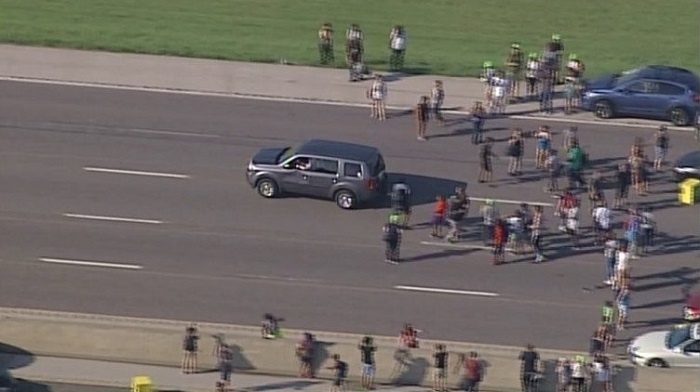
Many people may never have any real issues behind the wheel.
Maybe you'll see an accident or get into one yourself.
Maybe some idiot will try to race you or get angry because he didn't like the way you drive.
As long as you're cool, calm, and collected, most problems will end there or never materialize at all.
But that isn't always the case.
Especially for those in densely populated urban areas, a lot more happens on the road than simply driving from Point A to Point B. From road rage to protests to gang wars, there is a heightened risk of violence on the road in major cities, and you should be prepared to deal with it.
Secure Entry and Exit
Virtually all personal problems (carjackings, muggings, kidnappings, attacks, etc.) around your vehicle happen during transitional events: when entering or exiting your vehicle, or when you're stopped in traffic.
Before entering your vehicle, look around it and behind yourself. A full walk-around is best, but at least a full 360° around the vehicle and yourself.
When you're in your car, keep the windows up and doors locked. Most crimes of opportunity from carjackings to road rage can be prevented or at least delayed (to give you more options) by keeping the interior of your vehicle secure from the outside.
Before exiting the vehicle, again look all around it. Prior to "breaking the seal" in military and intelligence parlance, scan left to right in front of and to the sides, then back again, this time checking the rear view mirrors to complete the 360°. This is as relevant in your own garage as it is in public areas — a preferred method of home invasions start with sneaking into the garage as the homeowner returns, drives in, and closes the garage door behind them, effectivetly sealing themselves inside with their attacker(s).
These simple mindset tweaks don't cost you any real time or effort, other than making sure you do the checks and keep the interior of your vehicle secure, but are the most sure-fire way to make sure that you and those riding with you remain safe and secure as you travel.
Don't Become a Target Because You Can't Keep Your Opinions to Yourself
Do not put bumper stickers on your vehicle and remove any you already have.
The most cursory search shows countless accounts of people becoming victims of road rage, being pulled out of their cars by protesters, having their vehicles vandalized or set on fire, not being offered assistance, or being targeted for burglary or robbery because of the bumper stickers they put on their vehicle.
Make Informed Route Choices
Don't drive through the bad/dangerous parts of town if you can help it, and don't knowingly drive through an area with planned protests.
Follow the news — if something happens that make protests more likely, be that gang wars, police shootings, sports team wins/losses, or political changeovers, make sure you stay away from any areas where protests may occur.
If you do get stuck near or in a bad area or protest unexpectedly, see if you can back away, go down a side street, or find another route.
If you can't go another route, then roll up your windows, lock your doors, turn down the radio, and settle in for the wait. Don't provoke an altercation because you're impatient.
If you absolutely, positively, must get through, see the points below.
Keep Moving
Nobody gets carjacked driving 30 miles an hour, and moving targets are harder to hit.
Whether you're worried about a road-raging driver or getting carjacked in the bad part of town, put the windows up, lock the doors, and don't stop.
V8 Beats .45
First, don't be an idiot in the first place by getting into fights — just drive away.
If somebody cuts you off or boxes you in with their vehicle, use yours to push it or them out of the way and escape.
If you are attacked while driving, do not leave the protection of a working vehicle if you can help it.
If you cannot get away from a fight, deadly force is deadly force. If the situation is bad enough that you would be justified in using a gun for self-defense, you would equally be justified in running them over which is safer in every way.
If caught in a protest that is turning violent, you can either escape your vehicle in a manner that allows you to disappear into the crowd (you do have insurance for when they destroy your car, right?), or you can use your vehicle to escape. Don't gun it and run over a dozen people, just take your foot off the brake and ease forward until you can escape. Don't be this guy or this guy. Get out safe and alive and deal with the consequences later.
Invest in a Dash-Cam
Investing in a dash-cam is never a bad idea even for normal daily driving.
If any of the above situations seems likely to you, make sure you have evidence.
Especially if you use deadly force — and using your vehicle against anybody or anything IS using deadly force — "your word against theirs" is never a good option. Evidence rules over hearsay and eyewitness accounts; a dash-cam gives you evidence you can use.
If you don't invest in a dash-cam but you do get into a bad situation, pull out your phone and start recording — video or voice — as soon as possible.
The vast majority of the tips, tricks, and ideas above are free and easy to implement, and they go a long way towards making you a better driver. But as always, you can be better. Much better.
Back to School
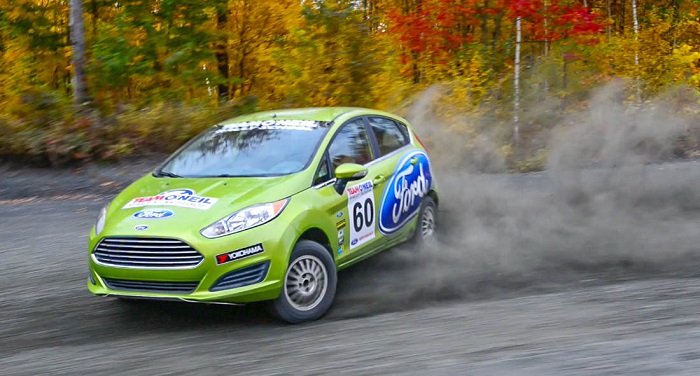
Not drivers' education like you did in high school. Not an "advanced driver improvement course" that the state mandated you take so you don't lose your license.
Real driving school.
Race school.
Choices abound, but we'll start with the basic recommendation:
Attend at least one full day of advanced/race/rally driving school.
Which course you attend will depend on your desires, finances, and what you want to accomplish.
If you simply want to be more comfortable and competent behind the wheel, start with a one-day vehicle dynamics class. Referred to as 1 Day Rally School, High Performance Driving, or just Driving School, these types of courses will give you far more competence and confidence behind the wheel than you have now.
You will learn a lot, regardless of your current skill level.
Any reputable school and most tracks will start with half-day or 1-day programs that cover vehicle dynamics like how to respond to emergency situations, correct skids, practice slides and recoveries, threshold braking, and more.
While you can read about it online, you need the physical practice to get it right and make it second nature and the open road is never the place to learn it for real.
Find a course that is close to you and you can afford:
- Skip Barber, Team O'Neil, The FIRM, Bondurant, Allen Berg, Bertil Roos, DirtFish, Simraceway, etc. will have some type of training that is close enough and affordable enough that you should be able to upgrade your skills without breaking the bank.
- If your daily driver is a luxury vehicle, excellent options include schools and programs from Aston Martin, Audi, Acura, BMW, Cadillac, Ford Performance, Jaguar, Lexus, Lotus, Mercedes, and Porsche.
- Check with the dealership where you bought your car — you may be eligible for free or discounted programs. Using Ford as an example, owners of the Shelby GT350, Focus/Fiesta ST, Focus RS, ST-series SUV's, and Raptor have complimentary access to the GT350 Track Attack, ST Octane Academy, RS Adrenaline Academy, ST SUV Experience, and Raptor Assault programs, respectively. Purchasing an AMG Mercedes includes complimentary or discounted access to the AMG Driving Academy. BMW and Mini may allow you to add their performance school(s) to the purchase of your vehicle. If your manufacturer offers a similar program, take advantage of it!
Advanced driving programs aren't limited to those with performance cars. No matter what you drive, you will reap great benefits from race/rally training, whether your daily driver is an Aston Martin, a station wagon, SUV, or pickup truck.
Specialty Driving Programs
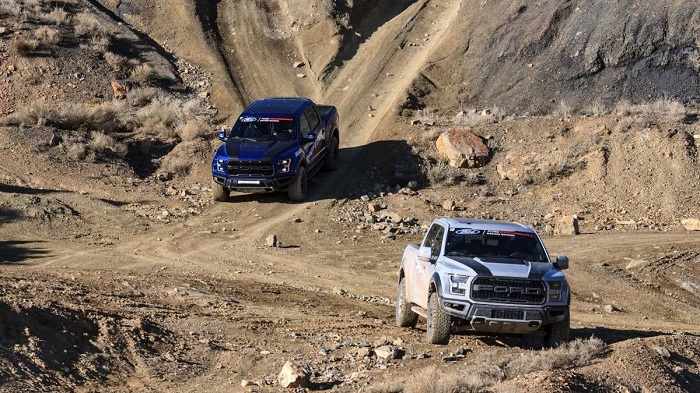
After your initial experience at a race/rally school, you may want to investigate specialized training for either specific environments, vehicles, or driving styles.
If you live where snow and ice are common, attend a winter driving program like those offered by Team O'Neil or the Bridgestone Winter Driving School.
If you drive a truck or SUV, you can take your off-road skills to the next level. A bone stock F-150 or Jeep Grand Cherokee is capable of far more than you realize, and that lifted Wrangler or jacked-up Silverado isn't cool unless you know how to extract everything it's capable of.
Land Rover, Bill Burkes, BSR, Constellis, The Driving Company, Badlands Off Road, Team O'Neil, The FIRM, and others offer various types of off-road courses that will help you get the most out of your SUV or truck. 4x4 operation, obstacle negotiation, traction management, and vehicle recovery are on the menu at any of these courses.
Even if you never plan to do serious off-roading, these courses will make you a better driver and you'll have fun no matter what.
Advanced Driver Training
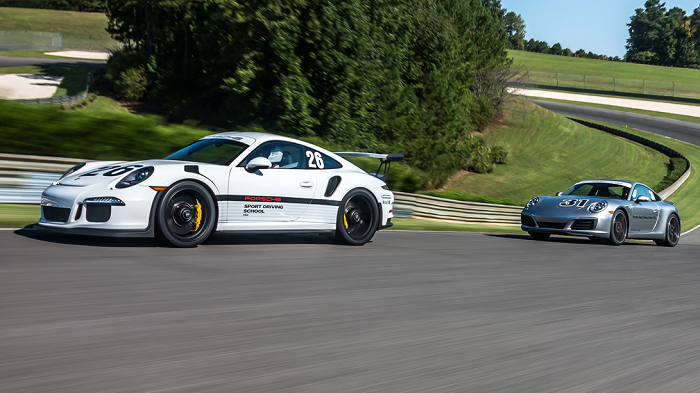
After going through all of the above, you now have a decision to make:
Do you want to simply be a safe and responsible driver?
Or do you want to be the best driver you can?
If it's the former, that is great — by attending one of the basic programs above, you're already better than 99% of the general driving population. You are more comfortable, confident, and can enjoy your driving at a level that most of the zombies on the road can only dream of.
But if you like what you've learned and want to take it to the next level, you'll have to pay for it: attend the longest race/rally driving school you can afford.
As far as a one-day school will get you, if you have the opportunity to attend a 2–5-day program at somewhere like Skip Barber, Team O'Neil, The FIRM, Bondurant, Allen Berg, Bertil Roos, DirtFish, Simraceway, or another top-rated school, jump on that opportunity. On top of the basics you'll get from a one-day program, you'll spend hours and days going faster and honing your skills.
It's said that it takes 10,000 hours of practice to truly master any skill, and high performance driving is no different. You simply can't do it in your daily driver on open roads. You need time, proper instruction, and feedback in high-performance cars on closed tracks to reach your potential.
It is expensive — these courses can easily cost $1,000+/day. But it's worth it.
A few thousand dollars to spend a few days driving 100+ miles per hour around a track will develop the skills and build the muscle memory to make it all second-nature when you go back to the road in your daily driver.
While upkeep is necessary, this is a one-time expense that will serve you every minute of the 1,000's of hours per year, year after year, that you spend on the road.
You may be a good driver.
You may be a safe driver.
You are not a great driver until you can drive a great car to the very limits of its capability safely and reliably.
Fun For The Whole Family
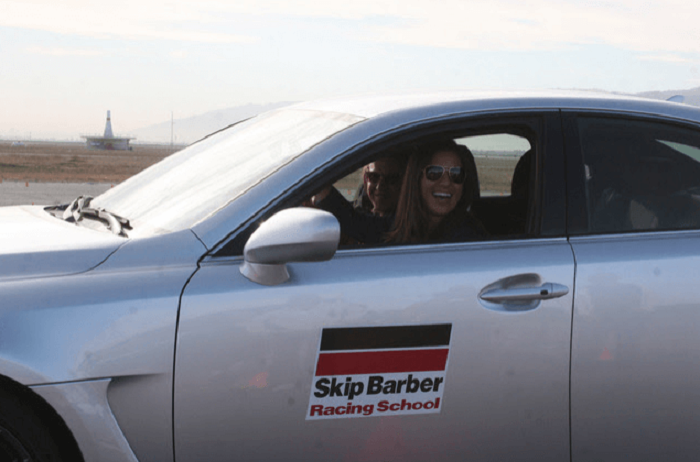
You're not the only driver in your family. If you can attend these schools with your wife, significant other, or children, do so.
From accident avoidance to emergency lane changes and managing braking distance, these schools will make everybody in your family better.
Especially if you have children in the 15–25-year-old range, one of the best investments you can make for their future safety and enjoyment of their vehicles is to send them to driving school.
Get Your Motorcycle License

If you don't already have your motorcycle license, you should get it.
Folks in many parts of the world are used to and familiar with motorcycles and mopeds on the road. Most Americans (among others) are not, which is unacceptable.
The best way to know how to drive with and around motorcycles on the road is to learn to ride one yourself.
The basic motorcycle course — via the Motorcycle Safety Foundation, your state licensing agency, or both — will give you the knowledge and experience to ride safely, as well as opening your eyes to how to deal with motorcycles and cyclists on the road when you're driving your car. The course is usually run over one weekend and is inexpensive enough that there's no reason not to do it. When you finish your course, it will qualify you to get the motorcycle endorsement on your license and start riding, if you want.
Even if you never plan to purchase or ride a motorcycle, going through the basic course and getting your license will make you safer in your daily driving and more capable all-around. It is a good idea no matter how you look at it.
If you currently ride, the information from the driving section above applies to your bike too: attend an advanced training class.
Which version of an advanced training class you take is up to your needs and preferences, but there are a few variations:
- The Motorcycle Safety Foundation offers courses like the Street Rider Course or Advanced Rider Course that are designed to hone your skills for day-to-day riding. These are inexpensive one-day programs that are available almost everywhere; whether or not you plan on attending more advanced training, the MSF courses are an excellent place to start.
- If you really want to take your riding to the next level, racing school is in order. There are many choices available depending on your location, available time, and financial commitment. There are schools and tracks around the world that will boost your skills, but the two prime racing schools in the United States are California Superbike School and Cornerspin/Cornerspeed. Check them both out, see which program sounds right, and go for it.
- If you're more the off-road type or your daily driver is an adventure touring bike, then check out a dirt racing or adventure touring school. BMW Performance, Jimmy Lewis, TourUSA, RawHyde, and XPLOR offer excellent training programs.
Whatever type of riding you do, there is always something you can do to enhance your skills and become a better rider.
If you don't ride yet, learning how will make you a better driver all around and is an excellent skill to have in general.
A Note on Speeding and Aggressive Driving

Speed limits, in their current context, exist mostly to generate revenue for the city/county/state, not for safety.
Even the origination of speed limits wasn't with an eye towards safety, at least not in the United States: national highway speed limits were implemented to minimize fuel usage during the shortages in the 1970's.
Despite cars getting faster, more efficient, handling better, and safer overall, most speed limits have stayed more or less the same. 55 miles per hour may have increased to 60 or 65 miles per hour, but the vast majority of traffic laws are intentionally more restrictive than they should be in order to generate revenue and exert control over a population.
Worldwide, it's common to find roads that easily support 100+ mile per hour traffic that are artificially limited to 50–60 miles per hour. In some areas like Washington, DC and Illinois, you'll find major highways with speed limits that are less than half of what they should be.
BACKGROUND/PHILOSOPHY: Studies have shown that drivers tend to drive at the speeds supported by the road, their car, and surrounding traffic, regardless of the posted speed limits. Those speeds are usually significantly faster (often 50-100% faster) than the posted speed limit. Meaning: speed limits are purposefully artificially slower than they should be.
While there are studies showing small increases or decreases in accident/injury rates for changing speed limits up or down, a general theme — backed up by many real-world experiments — is that fewer traffic signals and laws results in safer driving and fewer accidents; it forces drivers to pay attention and take responsibility instead of abdicating it to the state.
For most of us, however, that is not the world we live in and we must contend with an ever-increasing array of laws and punitive measures including cops patrolling the streets, red light cameras, speed cameras, and more.
In most cases these laws and regulations make drivers and pedestrians less safe, but they make the state money, which means they're here to stay. And if they're here to stay, that means that it's your duty to circumvent them as safely and effectively as possible.
Almost all drivers speed in some form. If you don't, you're probably driving improperly, holding up traffic, and making the roads more dangerous, not less.
Whether you're just going with the flow of traffic that happens to be moving at 75 in a 60, or you actively buzz in and out of traffic going 20 miles per hour faster than everybody else, there are things you can do to "speed better" — to drive safely, not get caught, and keep your wallet and driver's license intact.
- The first rule of speeding is to be safe. Do not drive your vehicle faster than you, your car, the road, and surrounding traffic can handle.
- Getting into an accident, getting hurt, or hurting others in order to save a few minutes on your commute is never an acceptable trade-off.
- Second, don't be an asshole.
- Don't tailgate others or slow down when somebody tailgates you. Go around or move out of the way so they can get past you.
- If you are in the left lane and somebody comes up behind you, move over to let them pass. If you don't move over to let them pass, you are wrong.
- Don't switch lanes at the last possible second to make an exit. Plan ahead.
- Don't merge into a lane if somebody is coming up fast behind you. Let them go first, then move over.
- Be smooth and cool.
- Don't whip in and out of traffic unnecessarily.
- Don't stomp on the gas or slam on the brakes, etc.
- Use your turn signal — always.
- Excuses like "if I use my turn signal, somebody might speed up to cut me off" don't fly. If you don't use your turn signal in all appropriate situations, you're the asshole.
- Don't be "that guy."
- Don't tailgate others or slow down when somebody tailgates you. Go around or move out of the way so they can get past you.
With those basics taken care of, there's more you should pay attention to:
- Make sure all headlights, tail lights, and signals are in good condition and working properly. These are necessary for your safety and those around you, and you don't want to give cops ammunition to use against you or reason to pull you over.
- Clean your windshield, windows, and mirrors. Visibility and situational awareness on the road are of paramount importance.
- Dirt, grime, bugs, water spots, dust, etc. on your windshield obscure visibility.
- Some window tint for privacy and security may be okay; do not have so much tint as to obscure your visibility or give cops more reason to pull you over.
- Vehicle is well maintained.
- Tires are in good condition, properly inflated, and appropriate for the season and your driving needs.
- If you live in an area that gets snow and ice, invest in a set of modern snow tires.
- Maintenance conducted at proper intervals.
- Mechanical issues fixed as soon as they become apparent.
- If you expect to really push any limits, over-maintain your vehicle. It must be perfect if you're going to push it to its limits.
- Tires are in good condition, properly inflated, and appropriate for the season and your driving needs.
- Vehicle interior is clean and free of distractions.
- No cell phone use at all when speeding.
- No radio use when speeding.
- No trash or junk around to interfere with driving or operating vehicle functions.
Once the basics are taken care of, you can worry about the technology necessary to make speeding (arguably all driving) safer, like radar detectors, laser jammers, apps, CB radios, and more.
How far you go with any of that is up to you:
- If you're a "casual speeder" who just feels the need to drive a little bit faster than the flow of traffic, maybe a windshield mount radar detector is all you need.
- If you're preparing for a Cannonball Run, then you're looking at thousands of dollars of technology professionally installed in your vehicle.
Finally, no conversation on speeding is complete without reading "the rules," as written by Alex Roy and Ed Bolian:
- The Rules of Professional Speeding
- The Harsh Truth Behind Speeding
- The Rules of Speeding, Part III: Why Seventies Porn Is Better
- Alex Roy's Rules of Professional Speeding, Part 4
- Ed Bolian's addendum to Alex's original list
- Ed Bolian's Summer Road Trip Checklist
If you're going to drive a vehicle, it pays to be the best driver you can. So get training, pay attention to everything you do on the road, and have fun doing it.
PROGRAM
DOWNLOADS
 Vehicle Maintenance Checklist
Vehicle Maintenance ChecklistA well-maintained vehicle looks better, feels better, and drives better. Use this checklist to keep on top of everything you need to do to keep your ride in top condition.
 Vehicle Safety Kit Checklist
Vehicle Safety Kit ChecklistBeing a good driver is more than being able to drive fast or safe. A properly stocked vehicle safety kit makes you an asset to everybody on the road.
In the next lesson...
Russia. Hong Kong. Turkey. Italy. Bolivia. Living the Gentleman Spy lifestyle means international travel. Stop being a tourist and live like a local by learning the language. Despite beliefs to the contrary, you can learn a second (or third, or tenth) language by following a proven, structured training program.
